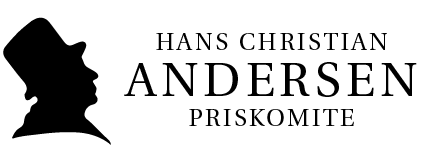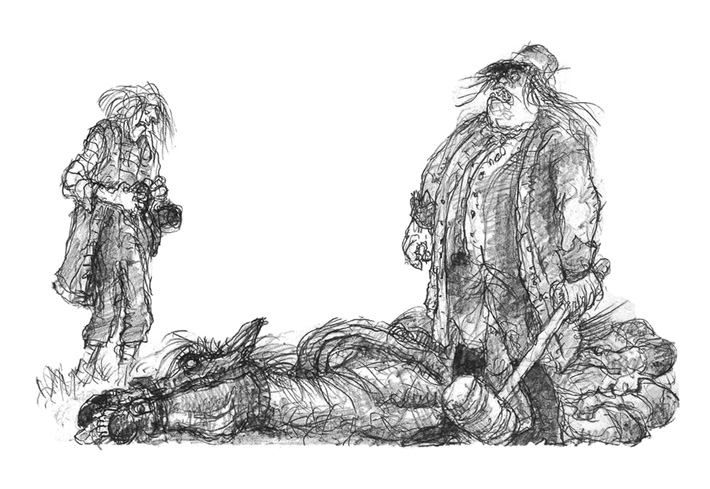“Just listen now …”
Towards the mid-1990’s impatience was growing in Odense. The bicentenary jubilee of the city’s famous son, the fairytale writer Hans Christian Andersen, was rapidly approaching. The celebrations of the jubilee of course had to be prepared well in advance. Among those who expected great things to happen in the coming years, and who at the same time believed that now the golden opportunity was coming, both of re-launching Hans Christian Andersen on a global scale and of putting Odense on the famous “global map” once and for all, was Benny Nybo, then a member of the town council. It goes without saying that he was not the only person looking forward to 2005, the bicentenary year, but his energy and enthusiasm for Hans Christian Andersen was frustrated by the insincere statements from whatever organization or person he approached in Odense that had something to do with Hans Christian Andersen and the upcoming jubilee, be it local politicians and political organizations or organizations of cultural promotion. He feared that there was a lot of vague good will, but a lack of organized cooperation between the organizations and individuals involved. He feared that the uncoordinated initiatives would make them get in each other’s way. Instead of waiting for someone to take the task upon himself, Benny Nybo himself made a decisive move. He approached the architect Kristian Isager, known in Odense for his participation in a variety of interesting projects. The two men had the extraordinary fortune that one of the employees at Isagers drawing office, Susanne Wiese Kristensen, proved to be a rare organizational talent. Further effectiveness was secured by gaining the cooperation of a number of key people who were both fiery souls and had organizational skills. Hans Jørgen Langkilde, PR manager at the TV 2 station, the lawyer Jan Moosmand and the enterprising book-seller Børge Grønne were approached. This group of six activists soon became known as “the self-appointed committee”, which it actually was. As neither the local Hans Christian Andersen Museum, nor Odense University, nor communal authorities thought that time was ripe to begin a formalized cooperation, the committee had to fend for itself. In retrospect, this situation actually proved to be a major strike of luck, because the activities of the self-appointed committee both heightened the public awareness of the activities preparing the Hans Christian Andersen jubilee and created a new and binding connection between the city and the poet’s living tradition. This was done by proposing the creation of a Hans Christian Andersen Award, which was to be given to individuals and organizations that had promoted the works of Hans Christian Andersen in an outstanding way and thus indirectly contributed to making the city of Odense internationally better known.
Without any official seal of approval, this initiative was generally received very well in Odense, and several sponsors turned up that were prepared to support the project. Even though the Hans Christian Andersen Award was and remains a purely honorary award with no prize money connected to it, organizing such an event still remains very costly. Costs include the giving out of the award statuette created by sculptor Jens Galschiøt, the award ceremony itself, the award winners’ travel expenses and their board and lodging expenses. It was a welcome help towards meeting those expanses that the committee was supported by the Ministry of Culture, by the now former Funen County and a number of private companies who either donated money or were able to help us through financial troubles with substantial discounts on deliveries and services, such as the Albani Breweries, the OAB printing house, the Radisson Blue H.C.Andersen Hotel, Nørgård Mikkelsen and the leading local newspaper, Fyens Stiftstidende. The award committee owes them thanks, particularly for their support in the first years. Without it, there would probably not have been any Hans Christian Andersen Award in the following years. The Odense Municipality also supported the organization of the award ceremony financially from the very beginning, thus creating lasting practical ties between the city of Odense and the Hans Christian Andersen Award. From the very beginning, it was the award committee’s ambition to create such a tie, and in the course of the years the cooperation between the municipality and the award committee has been continuously extended. In organizing the annual award ceremonies we now have a good and positive cooperation with the municipality, and the municipality’s funding of the ceremony has been growing steadily.
Near the end of the year 1995, preparations had come so far that the committee could plan organizing the first award ceremony in 1996. We had no difficulty nominating the first three award winners: Johannes Møllehave, the pastor and author, had tossed off his shrewd and inspiring interpretations of Hans Christian Andersen for a generation, and in 1985 he published the wonderful book with the title H.C. Andersens salt; he had also published a number of other books on Hans Christian Andersen. If any Dane deserved to be appreciated with a Hans Christian Andersen Award in 1995, he did. The committee also used the obvious opportunity to appreciate another area, which ever since has been one of the committee’s key areas: the promotion of Hans Christian Andersen. For that reason, it was fairly obvious for the committee to give an award to the “Multimedia H.C. Andersen” CD-ROM, which had been produced in a cooperation between the Ministry of Education’s multimedia center, Uni-C, Odense’s public school education authority and the Hans Christian Andersen Museum. With this new media, it was considered possible to reach new audiences, particularly among school children.
It was quite natural to choose 2 April, the poet’s birthday, as the day on which the first award ceremony would take place – even more so as there was surprisingly little competition. The Hans Christian Andersen Museum had their annual small event where a Hans Christian Andersen grant is given to – as it is “formulated a studious schoolboy from the school for the poor”, and the Hans Christian Andersen Parade hosted a birthday party for children in the Concert Hall. But apart from that, Odense had no celebration of Hans Christian Andersen. This was probably the reason why the first, rather small and modest award ceremony (which, however, was a great event for everybody who took part in it) attracted so much public attention. After the success of the first award ceremony, we decided without hesitation that an award ceremony would also take place in 1997.
There is a common saying that “Once is an event, twice is a tradition”. However, the award ceremony did not establish itself as a tradition that quickly. At that time, Odense still had a rather narrow Hans Christian Andersen profile, and the award ceremony was not integrated in it immediately. This manifested itself in the fact that the ceremonies in the years 1997 to 1999 took place at the castles of Egeskov and Nyborg. From 2000 onwards, however, there has been a formal agreement between the municipality of Odense and the award committee about a joint responsibility for the organization of the award ceremony, and from the same year onwards the award ceremony has taken place in Odense. Apart from the cooperation with the municipality, the committee has an inspiring cooperation with a number of other Odense organizations. The cooperation includes, among other events, Odense municipality hosting an annual Hans Christian Andersen show for children in the Concert Hall, the Hans Christian Andersen Museum’s traditional grant ceremony and their new “Ville Vau” wonder world for children, the local public libraries and the University of Southern Denmark. In the course of years, many other organizations have offered a variety of fine experiences.
Past and present are united in the committee, as two of the founding members, Susanne Wiese Kristensen and Jan Moosmand, still after 25 years bear the brunt of work. Fortunately, in the course of all those years, many others have joined the committee for shorter or longer durations of time and have, each in their own way, contributed to the committee’s work with their knowledge and organizational skills. Their participation has secured good relations to local and national networks, to scientific and artistic milieus connected to Hans Christian Andersen, to business enterprises and tourist organizations, to the media, to research and organizations interested in local history.
The backbone of the committee’s work, however, is the partnership between the committee and Odense municipality. We must consider ourselves lucky to have this very good partnership, because only through this can we secure that on the 2 April there will continue to be broad celebrations in Odense of the man who, above all others, has made the name of the Funen capital known in great parts of the world. The award committee feels the obligation to be a part of this promotion by inviting some of the many, many individuals and organizations to Odense, which – each in their own way – continue to keep Hans Christian Andersen’s work alive. It is our obligation to invite them to Odense in order to appreciate their achievements and to present well-deserved awards to them. Hereby we hope to create a living and dynamic cultural exchange between the poet’s ambassadors and his grateful native town. It is a gratitude which we feel both towards the poet and his works which have gratified millions all over the world.


